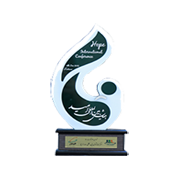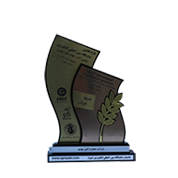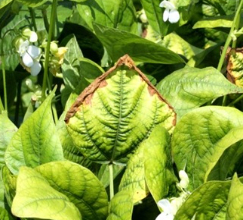
National selection of top producer of
poison and fertilizer
in Iran

Omid International Conference
International Conferences Center
In Tehran

Omid Second International Conference
International Conferences Center
In Iran

Omid Third International Conference
International Conferences Center
In Iran

Omid Fourth International Exhibition
International Conferences Center
In Tehran

11th International Agricultural Industry
Exhibition
Machinery and related services

Second Specialized Agricultural Exhibition
The permanent location of
the Bustan fairs

11th International Agricultural Fair
Premier Booth
In Iran

Sixth specialized exhibition
Tehran Agricultural Agencies
In Iran

National Award for Top
Manufacturing Unit
In Iran-gazvin

First place
Safir Cup Tournament
In Winter

Top Team
Ramezan Cup Tournament
TehraniMoghadam

Third place
Safir First Futsal Cup Tournament
itcup

Potassium and its role in plants

Potassium, like nitrogen and phosphorus, is one of the most needed nutrients in plants. The amount of potassium in the earth's crust is about 1.9 to 2.3 percent (the amount of total potassium in agricultural soils is between 0.5 to 2.5 %، However, that part of the total potassium in the soil that can be exchanged or used in the plant is insignificant. The amount of potassium that is absorbed by the plant is equal to the amount of nitrogen used by the plant in most cases.
Plants like nitrogen need a lot of potassium. Usually the average amount of potassium consumption is between 50 and 300 kg per hectare (equivalent to 125 to 750 kg per hectare of potassium sulfate). In most crops, the amount of potassium consumed by seeds or fruits is far less than the amount consumed by other plant organs that remain at the surface. In cereals, more than 70% of the harvested potassium remains in the straw. Therefore, how to manage crop residues in the recommended amount of potassium fertilizer is very effective. To produce 40 tons of sugar beet tubers, when the foliage residue is collected from the ground, 250 kg / ha of potassium (equivalent to 600 kg / ha of potassium sulfate) and if the foliage residue is not collected, only 110 kg / ha Potassium (equivalent to 275 kg / ha of potassium sulfate) is extracted from the soil.
Potassium is the most abundant nutrient in the 15 cm topsoil. Weathering of minerals containing potassium and continued use of potassium fertilizers are factors affecting the entry of potassium into the available section and harvesting by plants, erosion and leaching are factors affecting potassium wastage. Although potassium is not one of the effective elements in plant structure and has a mainly catalytic role, the potassium requirement of some plants is even higher than nitrogen. For example, the potassium requirement of sunflower is twice the nitrogen requirement.
The amount of potassium in the soil is higher than phosphorus, while the phosphorus of the earth's crust is 0.12% by weight, the amount of potassium is several times that of 2.30%. The average potassium in soils is 1.2%, which due to degradation and leaching, its amount has reached less than the amount of potassium in the earth's crust. Thus, the higher the degree of aeration of the soil, the lower its potassium content. The concentration of potassium in soils varies and its amount in the plow layer reaches several hundred kilograms per hectare.
Because potassium leaching is easier than phosphorus, a significant portion of this element is leached from soils that have been leached a lot and removed from the soil profile. In general, two factors, rainfall and temperature, accelerate the release and leaching of soil potassium. This is especially true in hot and humid areas. Except for the potassium that is added to the soil through chemical fertilizers, the potassium in it is mainly formed from the decomposition of rocks containing potassium.
Only a small amount of total potassium in the soil is immediately absorbed by the plant, and in terms of usability in the plant, there are three general forms of relatively non-absorbable, with slow absorption and fast absorption in the soil, all three of which are mentioned are in balance with each other. The fast-absorbing part of potassium is present in the soil solution and is easily used by the plant. The constant movement of potassium in the soil, due to plant uptake and leaching, causes static equilibrium to never be achieved in the true sense.
Soil soluble potassium
The plant receives the required potassium as K + from the soil solution. The required concentration of potassium for the plant mainly depends on the type of plant and its growth stage. Studies show that the optimal concentration of potassium in soil solution is 20 to 60 mg / kg and depends on the type of plant, soil structure, the usual amount of fertilizer and usable water. The effect of potassium in soil solution on plant yield depends on the presence of other cations, especially calcium and magnesium.
Only a small part of the potassium required by the plant, which is between 6 and 10% of the total potassium, is supplied directly from the contact of the plant roots with soil particles, and most of it is obtained through the potassium in the soil solution. The transfer of potassium from the soil to the roots of plants is one of the most important issues in plant nutrition.
Factors affecting the ability to absorb potassium from the soil
Factors affecting the ability to absorb potassium are divided into two general categories (soil factors and plant factors). In summary, soil factors affecting the ability to absorb potassium can be the type of clay minerals, cation exchange capacity, amount of exchangeable potassium, soil potassium stabilization capacity, soil potassium, root development depth, moisture, aeration and soil temperature, He knew the pH and the amount of calcium and magnesium. Plant factors affecting the ability to absorb potassium include root cation exchange capacity, root network and expected yield, plant type, plant density per unit area and time factor. Important factors in determining the amount of potassium that can be used include the total amount of soil potassium, root density, and the amount of potassium absorbed by the crop. Potassium with the chemical symbol K is one of the 17 essential elements for growth and reproduction in plants. This element, like nitrogen and phosphorus, is part of the main material (macro).
Potassium plays a key role in all the processes that take place to maintain plant growth and reproduction. Potassium deficiency in the plant reduces the plant's resistance to drought, waterlogging and high and low temperatures. Potassium deficiency also reduces plant resistance to pests, pathogens and nematode infestation. Because potassium improves the overall health of growing organs and protects plants against disease, this element is used as It is known as a nutrient that maintains quality. Potassium affects the quality of factors such as size, shape, color and strength of grains and seeds, it also improves the quality of cotton fibers. Potassium increases crop yields because:
-Increases root growth and improves drought tolerance.
-Produces cellulose and reduces lodging.
- Activates at least 60 types of enzymes that are effective in growth.
-Involved in the process of photosynthesis and food production.
- Helps transfer sugars and starches.
-Causes the production of grains with a lot of starch.
-Increases the amount of protein in the plant.
- Preserves plant inflammation and reduces plant plasticity.
- Prevents the spread of plant diseases and nematodes.
Symptoms of potassium deficiency
The transfer of potassium inside the plant is so high that it can move from old tissues to young tissues. As a result, the symptoms of potassium deficiency are first seen in the lower leaves of the plant and then with increasing deficiency of this substance, the symptoms move to the upper parts of the plant. One of the most common symptoms of potassium deficiency in plants is yellow burn (chlorosis) which occurs at the margins of the leaves. In more severe cases, the burnt margin of the leaf is removed. In the case of plants with broad leaves, such as soybeans or cotton, the entire leaf may fall off, resulting in premature plant death. Plants that are deficient in potassium grow slowly and the development of the root system is weak. The stems are weak and grains such as corn and small grains stagnate in growth. When potassium is not enough, perennials such as alfalfa and grass are exposed to frost.
Potassium deficiency in most plants usually appears as leaf burns. For example, corn needs potassium to be detected by the yellowing of the tips and edges of the lower leaves of the plant. This color change does not spread to the main vein like nitrogen deficiency, but gradually progresses from the tips and edges of the leaf upwards and inside the leaf. Potassium deficiency in alfalfa often appears as white spots near the margins of old leaves. Sometimes this local complication is accompanied by yellowing of the leaf margins, and other times the margins of the leaves turn yellow without the formation of these spots, the leaf margins eventually dry out and become tubular below the leaf, and It often swells the spaces between the veins and gives the leaves a wrinkled appearance. In the case of soya, potassium deficiency causes the margins of the leaves to turn yellow.
In general, the appearance of potassium deficiency can be classified as follows:
-Potassium deficient plants are weak, short and small.
-The growth of the main stem and branches stops and the distance between the nodes is shortened and if the shortage becomes severe, the branches start to dry from the end.
-In cereals, the number of spikes is low and the number of seeds per spike is also reduced.
-The formed seeds are wrinkled and thin and the spikes do not fill.
-The leaves turn dark greenish-gray and lose their clarity and freshness, and show symptoms such as burn tips, burn edges and the appearance of burns inside the leaf area with a density higher than the leaf margin, and if The deficiency is severe, appearing all over the leaves, first on the old leaves and then on the whole leaves.
-In citrus, the fruits either turn very red or remain green and seem immature, and their taste becomes sour and the flesh of the fruit becomes woody.
-The skin becomes thick, rough, discolored and dehydrated.
-Creating green spots on the fruit called green back.
-First, the old leaves are damaged.
-Chlorosis between veins
-Occurrence of brown spots or yellowing of the leaf margins
-Burns and entanglement of leaf margins
-Decreased plant growth and root development
-Small and pale fruits
Potassium and nutrient balance in the plant
Other nutrients in the plant should be sufficient for maximum potassium uptake from the fertilizer. There is a special connection between potassium and some nutrients. High potassium fertilizers may cause the plant to have less access to magnesium. As a result, the growing plant is deficient in magnesium, and on the other hand, the magnesium in the soil is reduced. This problem often occurs for crops that are in sandy soils. On the other hand, when the plant grows in soil that is rich in magnesium, it will suffer from potassium deficiency, if the soil is high in phosphorus and low in potassium, this problem will be more pronounced.
Absorbable shapes
It is mostly absorbed by the plant as K + ion through the roots.
The role of potassium in plant breeding
Potassium is one of the essential elements for plant growth and development. Soil potassium is divided into four forms in terms of accessibility for plants: solution, exchange, non-exchange and construction. The balance between different forms of soil potassium continues to provide the potassium required by the plant and these equilibrium relationships are very important in plant nutrition. Potassium in the soil is reduced due to plant uptake, leaching and soil erosion and Structural potassium is especially important in potassium deficiency conditions.
The role of this element as a component of plant compounds is very small or zero, but its existence as a regulator of photosynthesis, carbohydrate transport, protein synthesis, etc. is essential.
Potassium intake in plants after nitrogen is higher than other elements, but because soils often have large amounts of potassium can be used, so adding potash fertilizers to such soils has no effect on plant growth. Potassium is present in soils, mainly in the structure of minerals, which are released as potassium ions after aeration and enter the soil solution. Potassium ions are then adsorbed on the cation exchange points of the soil and can be easily used by plants. In soils with a drier moisture regime, usable potassium is stored in the soil if not leached. These soils usually have a neutral to alkaline reaction and do not need to be limed or increased potassium fertilizer to increase yield, while in wet areas, leaching potassium is removed from the soil, resulting in moderate to high yields, too much potassium fertilizer should be added to the soil. Potassium deficiency is severe in organic soils because the number of minerals containing potassium in these soils is very low.
When potassium deficiency occurs, the minerals are aerated by the mechanisms that occur in the rhizosphere environment and give their potassium to the plant. Potassium-releasing bacterial microorganisms are often heterotrophic and aerobic, and their mechanisms in potassium release include the production and secretion of organic acids and protons, the secretion of extracellular polysaccharides, the production of organic ligands, and siderophores.